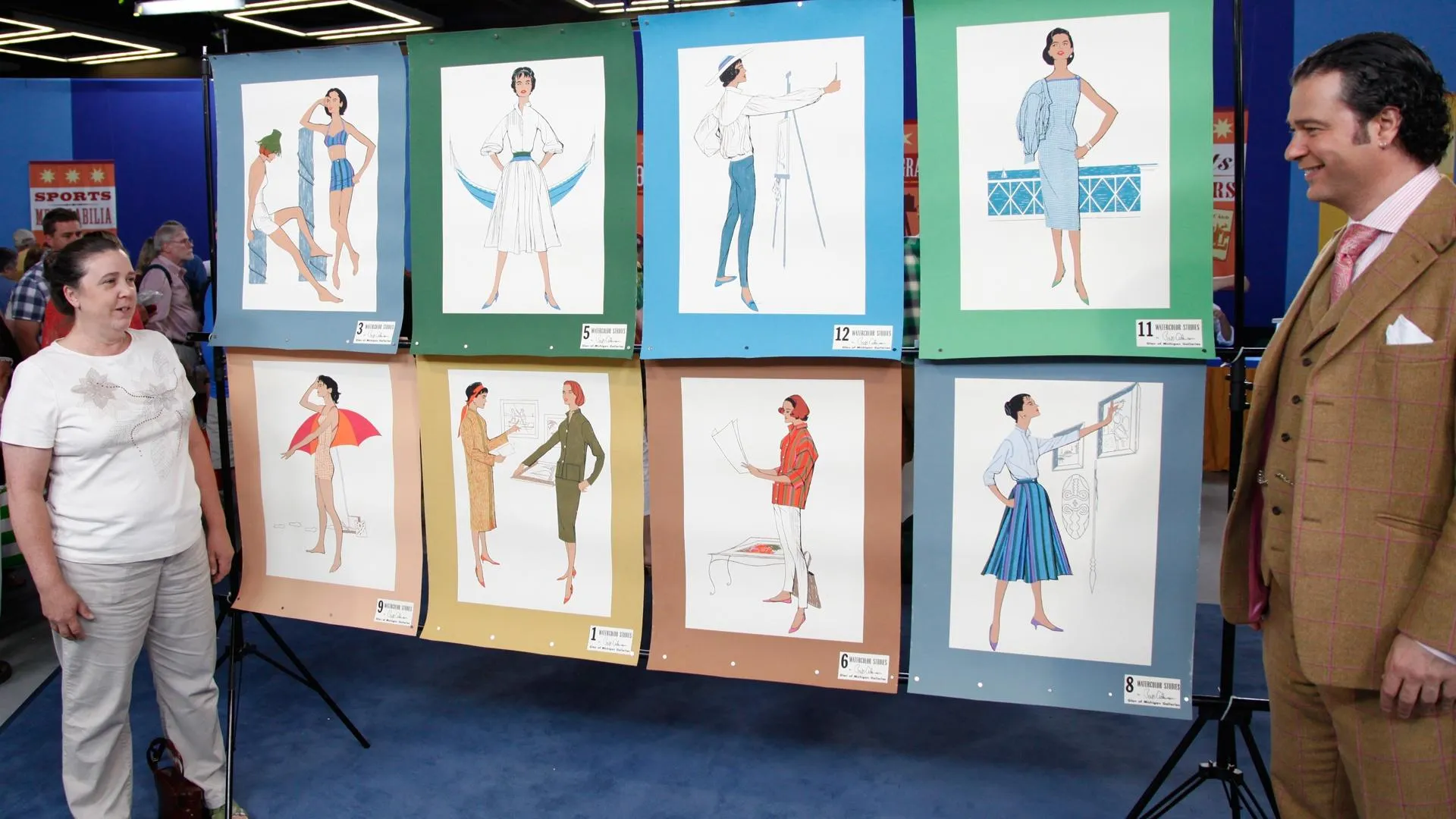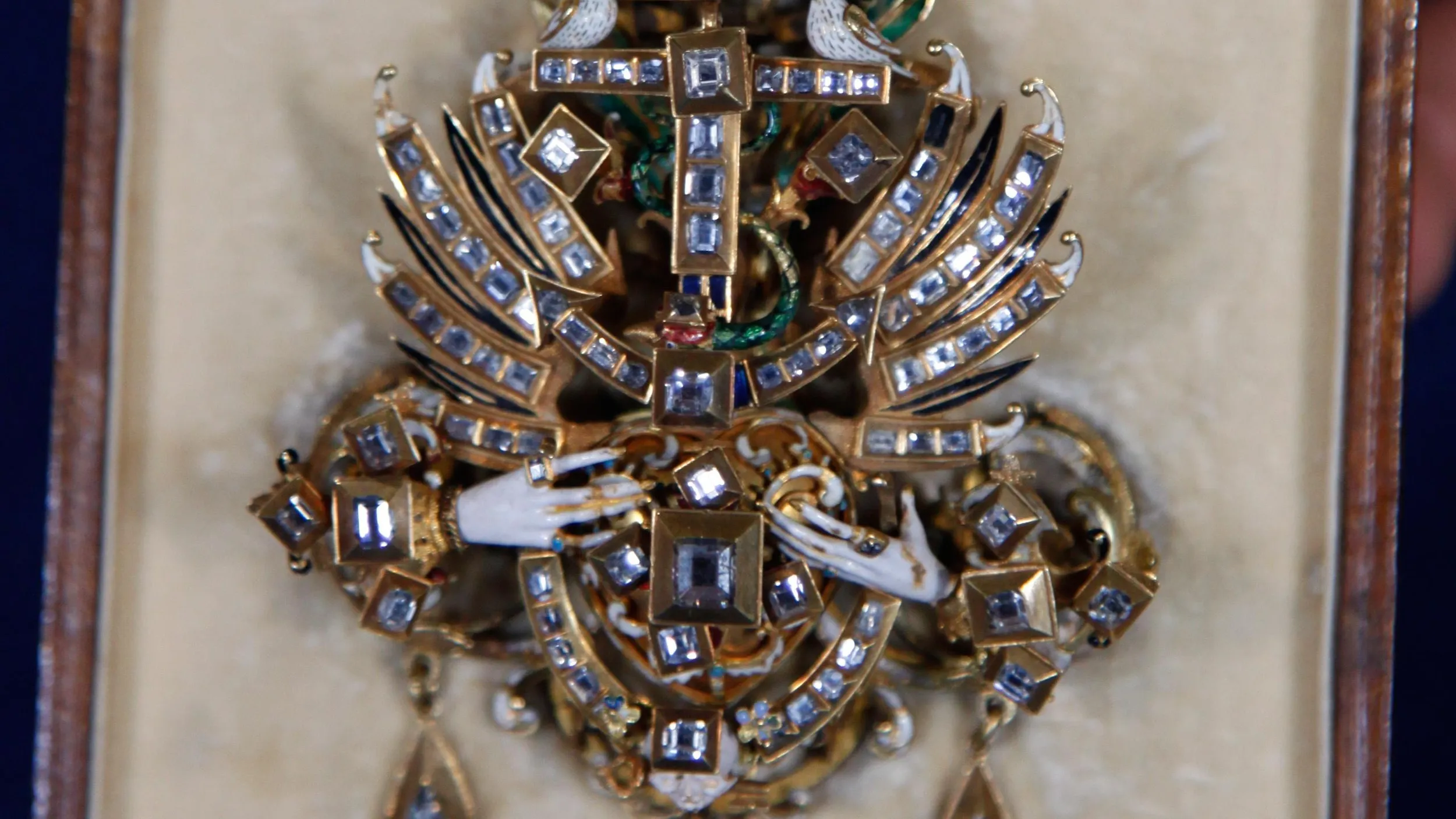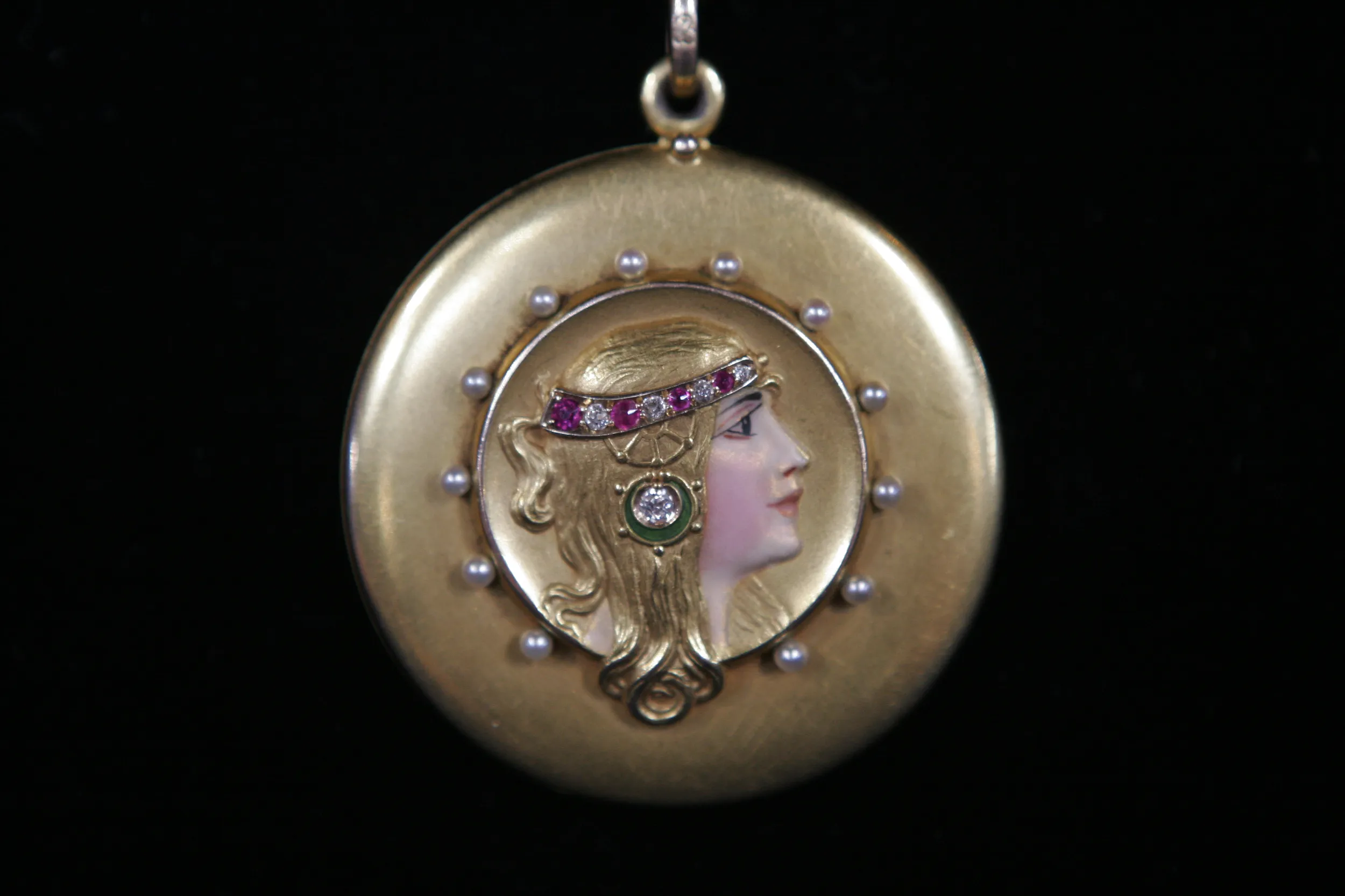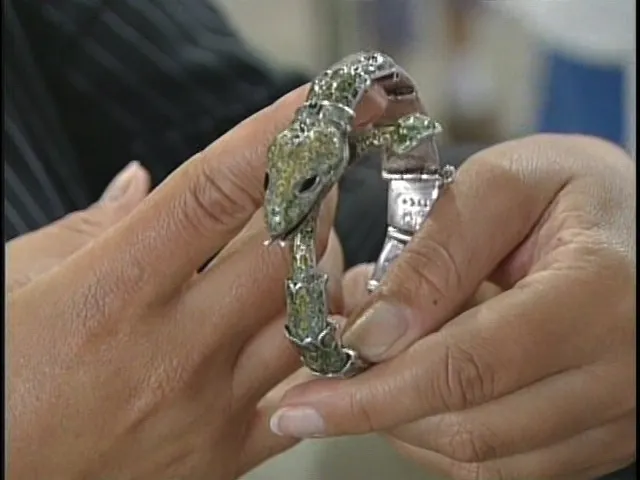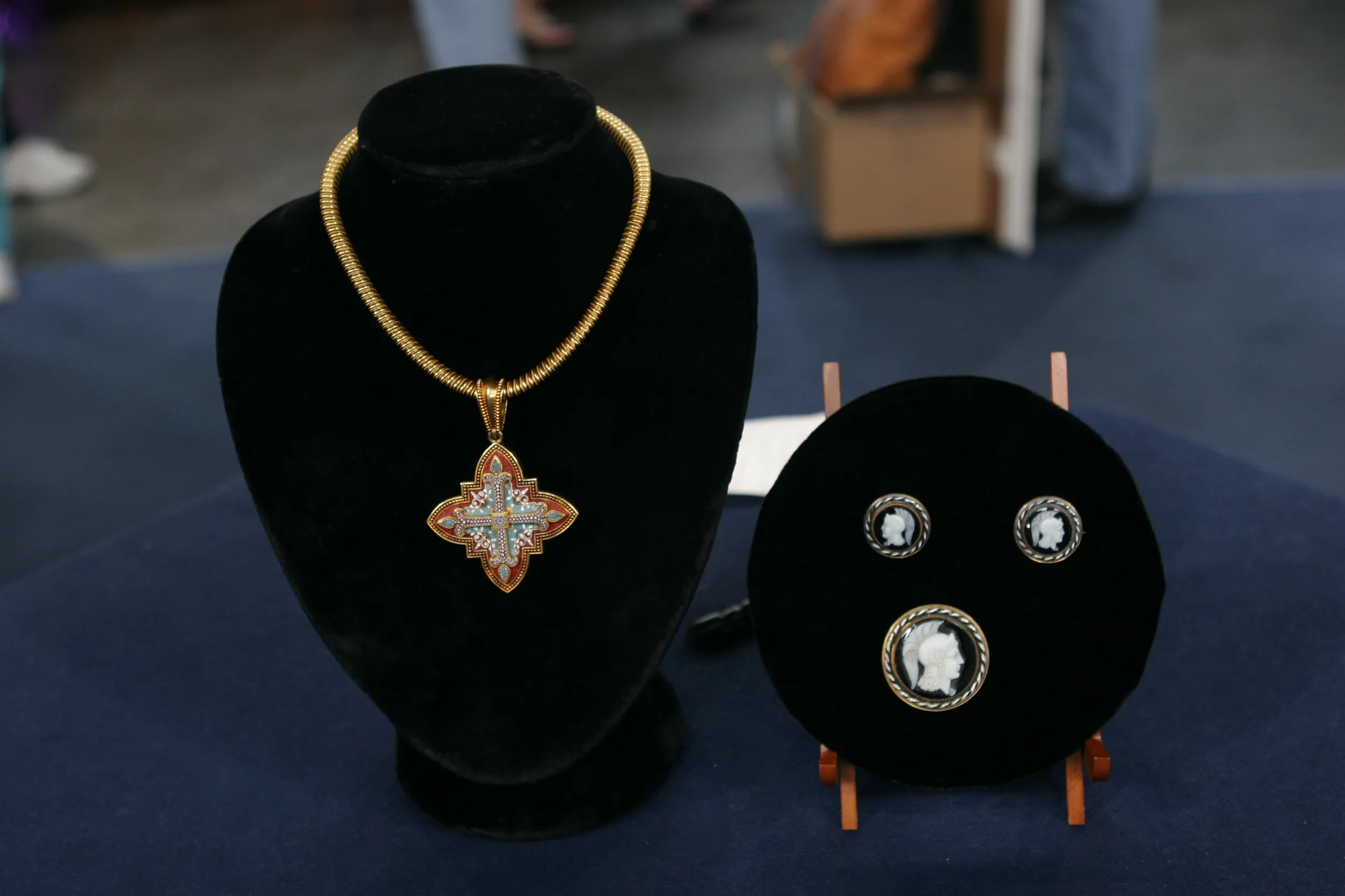GUEST: I got it from my mother, who got it from her parents, and it goes back to my great-grandfather, who managed a shipyard during World War I. After the war, he traveled around the world and brought home some souvenirs, and this was one of them. He picked it up in Paris in 1923.
APPRAISER: And we have an original bill of sale, and it's dated 1923, and it came from Arnold Seligmann in Paris. Seligmann was a very well-known connoisseur and collector of antiquities, renaissance jewels, and as he says, curiosities on his bill of sale. And in the bill of sale, he gives it a particular description as well, and the high point is that he says, "This jewel had been made for Gabriel Bethlen"-- he was the prince of Transylvania-- in honor of his marriage to Catherine of Brandenburg, and that it dates from the late 16th century. So what you do have here is the actual jewel. There are many pieces out there that have attributions that are never quite correct, but this piece is 100% correct. Stylistically, it has a very Germanic and Austrian stylization to it, as would be typical of the period. And this was a marriage jewel; this was to commemorate the marriage, and in doing so, it embodies all the different Catholic symbols related to Christianity and marriage. So we have a cross, but the cross also becomes an anchor, which is the anchor of hope. We also have two doves. The two hands on either side, which are enameled, are clenching a heart. The heart is in the background. And then on the bottom here is a skull, and this is related to death and immortality, but also to the idea of love everlasting, till death do we part. The piece is made of gold, and it's highlighted by rose cut diamonds and then accented with both white and green enamel on various portions of the piece. Now, have you ever had this item appraised before?
GUEST: No, I couldn't find anything to compare it to.
APPRAISER: Do you have any idea what was paid for the piece when it was purchased?
GUEST: He paid 45,000 francs. There was a notation on the bottom from New York that says $2,770. That might be an equivalent.
APPRAISER: On the ROADSHOW, we see very few late 16th-century pieces. There just aren't that many out there. And it's the scale and the magnitude of this piece and the symbolism that really makes it so extraordinary. At auction, I would place a value on this of somewhere between $50,000 and $60,000.
GUEST: That's a lot.
APPRAISER: Well, as we would say in the business, "Try to find another one."
GUEST: Yeah.

